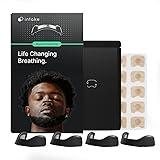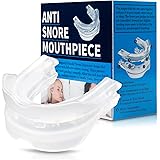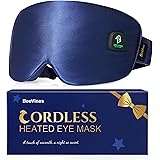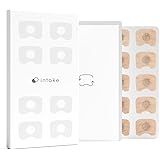Unlocking Great Sleep in the Backcountry: Your Guide to Restful Outdoor Nights
Do you ever wonder why a full day of challenging hikes still leaves you restless at night?
Many backpackers face this frustrating reality. Achieving great sleep in the backcountry can feel like an impossible dream. This post expands on the video above, offering practical advice.
We will explore key components of a successful sleep system. Your journey to restful nights outdoors begins here.
1. The Foundation: Selecting Your Sleeping Pad for Superior Backcountry Sleep
A high-quality sleeping pad is crucial. It acts as a barrier between you and the cold ground. It also provides essential cushioning.
Many early campers rely on closed-cell foam pads. However, inflatable sleeping pads offer significant benefits. They are more comfortable and often warmer.
They also pack down much smaller.
Go Thicker for Enhanced Comfort
Pad thickness directly impacts comfort. A thicker pad offers more cushioning. This is especially true for side sleepers.
The ground’s firmness is effectively minimized. A minimum thickness of 2-3 inches is often recommended.
Width Matters: Prevent Arm Sag and Improve Positioning
Wider pads are often overlooked. A narrow 20-inch pad can be restrictive. Your arms may fall off the sides.
This forces unnatural sleeping positions. Research shows that constricted sleep postures reduce overall rest quality.
Consider a wider pad if possible. Pads measuring 25 inches or more are available. This allows natural arm placement and movement.
Understanding R-Value: Your Guide to Warmth
The R-value measures thermal resistance. A higher R-value means more insulation. This keeps you warmer in cold conditions.
For example, a pad with an R-value of 3.2 offers moderate insulation. This might be suitable for three-season camping. However, individual warmth perception varies greatly.
Always consider the lowest temperatures you expect. Choose an R-value that exceeds these needs. Many manufacturers provide temperature guidelines for their R-values.
It is generally advised to add 1-2 points to your R-value for cold sleepers. This helps ensure adequate warmth.
2. Beyond the Bag: Embracing Quilts for Unrestricted Backcountry Sleep
Sleeping bags are a traditional choice. However, they can be restrictive. Many campers find them confining.
A quilt offers more freedom of movement. It feels more like a blanket system. This can greatly improve your comfort.
Quilts Offer Unparalleled Freedom
Quilts allow natural movement. You can easily toss and turn. Side sleepers especially benefit from this flexibility.
Your knees can extend comfortably. This prevents the “cocoon” feeling of a sleeping bag.
Studies suggest that unrestricted movement during sleep promotes deeper rest. This leads to better recovery.
Efficiency in Design: The Weight Advantage
Sleeping bags contain a “wasted” half. The insulation underneath your body is compressed. This insulation provides almost no warmth.
However, it still adds significant weight. Quilts eliminate this unnecessary material. They are designed to be lighter.
This reduces your pack weight. Lighter loads contribute to a more enjoyable backpacking experience.
The Zenbivy Sleep System: A Holistic Approach to Backcountry Comfort
Some systems enhance quilt benefits. The Zenbivy sleep system is a prime example. It combines a quilt with a sheet.
This sheet fits over your sleeping pad. It creates a bed-like feel. Direct contact with the pad is avoided.
The Zenbivy sheet includes a built-in hood. This keeps your head warm. It also secures your pillow.
Integrated hooks and loops secure the quilt. This prevents drafts. It maintains warmth even when tossing and turning.
Such integrated systems are often praised for their comfort. They merge key components for optimal sleep.
3. The Unsung Hero: Why a Quality Pillow is Key to Great Sleep Outdoors
Many backpackers overlook their pillow. They use stuff sacks or basic inflatables. This often leads to poor sleep quality.
A proper pillow supports your neck. It provides comfort similar to home. This is vital for restful sleep.
The Limitations of Basic Pillows
Stuff sacks filled with clothes lack consistency. They can be lumpy and unsupportive. Inflatable pillows often squish your ears.
They also can feel too firm. These options do not offer sustained comfort. They fail to support natural spinal alignment.
Data from sleep studies highlights neck support as critical. Improper support can cause pain. It disrupts deep sleep cycles.
The Hybrid Pillow Advantage: Inflatable with Cushion
Hybrid pillows offer the best of both worlds. They combine an inflatable core with a cushioned top. This design is highly effective.
The inflatable base provides consistent loft. It ensures the pillow maintains its shape. The cushion adds softness and pressure relief.
The Nemo Fillo is a popular example. It is lightweight yet comfortable. It avoids the ear discomfort of purely inflatable options.
While compressible pillows exist, they often lack loft. They flatten too much under head weight. This makes them less effective for sustained comfort.
A hybrid pillow provides enduring support. It significantly improves sleep quality. This small change yields big results.
4. Staying Warm: The Critical Role of Temperature Management for Sleep Outdoors
No gear can compensate for being cold. Temperature is the ultimate priority. Staying warm is essential for great sleep in the backcountry.
Both your quilt and sleeping pad contribute to warmth. They form an integrated insulation system. Understanding their ratings is vital.
Coordinating Your Sleep System for Optimal Warmth
Your quilt’s temperature rating indicates its lowest comfortable use. Similarly, your sleeping pad’s R-value determines its insulation level. These two elements must work together.
A quilt might be rated to 20°F. However, if your pad only has an R-value of 1.0, you will likely still be cold. The ground will steal your body heat.
Always match your gear to anticipated conditions. When in doubt, err on the side of warmer gear. It is easier to vent heat than to create it.
Navigating Temperature Ratings: Be Informed
Gear companies use various testing standards. These ratings can sometimes be misleading. An ISO or EN rating offers more reliability.
Some brands use proprietary methods. This can lead to inflated claims. Always read reviews and compare actual user experiences.
A common recommendation is to add 10-15°F to a sleeping bag or quilt’s rating. This provides a safety margin. This ensures comfort in colder weather.
Your personal metabolism also plays a role. Cold sleepers may need even warmer gear. Listen to your body and adjust accordingly.
Prioritizing proper temperature management is paramount. It ensures that your advanced sleep system performs as intended. This is the foundation of great sleep in the backcountry.








